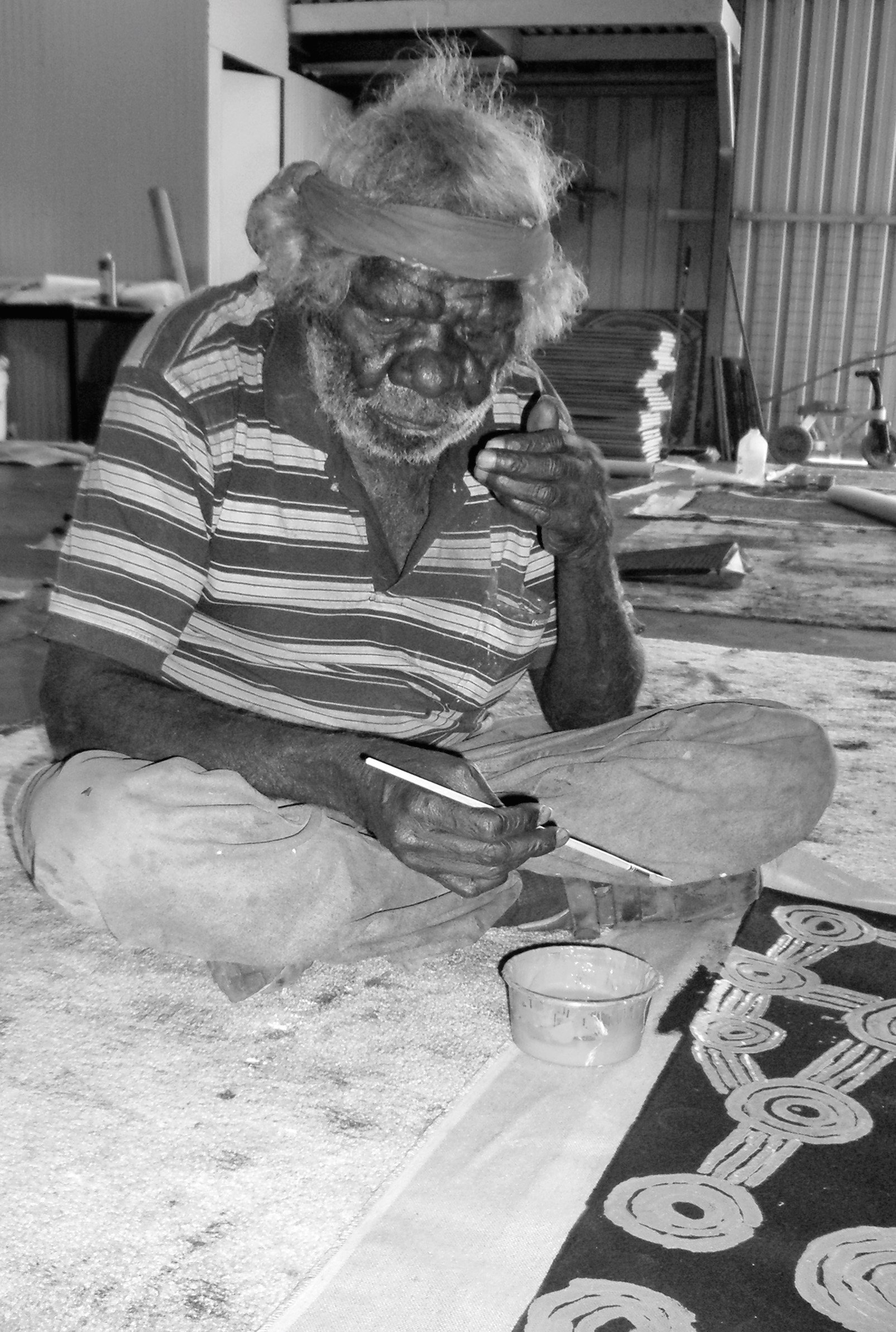WILLY TJUNGURRAYI
MARKET ANALYSIS

Despite a career spanning 30 years, relatively few of Willy Tjungurrayi’s works have been offered on the secondary market. Only 40 have sold despite his towering presence in the primary market during the last decade. Interestingly the book Papunya Tula-Genius and Genesis published in 2000, which is held largely responsible for the recent succuss of Papunya Tula art in the market, featured only one work by this artist along with several large men’s works on which he collaborated. His one solo work was a large Tingari image painted in his mid 1980’s style that today seems dated in comparison to his later works. The omission of more recent work was clearly due to the fact that by this time the artist was already painting for a number of independent dealers in Alice Springs, most notably Chris Simon (Yanda Art) and Tony Mason, for whom many of his best works of this later period have been painted. Despite this there is little doubt that Papunya Tula provenanced works will continue to sell for a premium in the short to medium term, as evidenced by his highest recorded price to date. Hail-Storm at Kaakuratintja 2002, sold in 2005 for $59,250. However this work was large (153 x 183cms) in comparison to his stylistically similar painting Tingari Cycle, 2002 (122 x 122 cms), which had been created for one of the independent dealers in Alice Springs yet sold for $26,400 at Lawson Menzies in 2004, the 3rd highest price achieved for his work. This painting was estimated at just $7000-$9000 yet the numerous bidders, in what seems to be an increasing trend, clearly valued the quality of the painting over its inferior provenance.
There has been a clear preference for paintings by this artist produced since 2000, along with those created prior to 1982, with his record price falling in the former and the 2nd highest in the latter. Of works painted between 1983 and 1999 just 8 have sold at very modest prices while 11 have been passed in. Amongst these have been major works with excellent provenance principally painted in the more generic Tingari men’s style that was prevalent throughout the 1980’s. Nevertheless Willie Tjunurrayi is one of the few Pintupi men who have a significan number of works created between 1995 and 1990 in their ten highest records. His second highest sale was painted in 1976 while two works created in 1981 and one in 1985 occupy his 6th, 7th and 8th places.
Wilie Tjungurrayi has been a prolific painter during the last decade and the availability of his works in the primary market has definitely adversely affected his auction prices and clearance rate. This is clearly evident from the fact that 12 of the 18 works offered between 2001 and 2004 sold for a clearance rate of 66% while between 2005 and 2008 his clearance dropped to 42% with only 22 of 52 works finding new homes. In 2008 alone with only 3 works selling of the 10 presented at sale his career success rate fell by 2% to just 48% despite the fact that his career average price went up slightly. It did so on the back of the sale of two works that both sold for $14,400. Interestingly the larger measured 122.5 x 182.5 and carried Papunya Tula provenance while the smaller 102 x 112 cm. work had been originally sold through Hank Ebes’ Aboriginal Gallery of Dreamings in Melbourne who had purchased it from Chris Simon. The tighter, more formulaic work was typical if his paintings for Papunya Tula in the late 1990’s while the larger freer work exhibited the more expressive style of his post 2004 paintings.
During the last 5 years Willy Tjungurrayi has produced a number of masterpieces both for Papunya Tula and for independent dealers. There is no doubt whatsoever that his works are equally good regardless of those important dealers he works with. Non-Papunya Tula paintings sell in the primary market for prices equal to, or better than, his best results so far at auction and it is likely that a number of these will be considered his masterworks in the future. I would expect original source provenance to become less important than the impact and quality of the painting itself, as time progresses.
© Adrian Newstead

